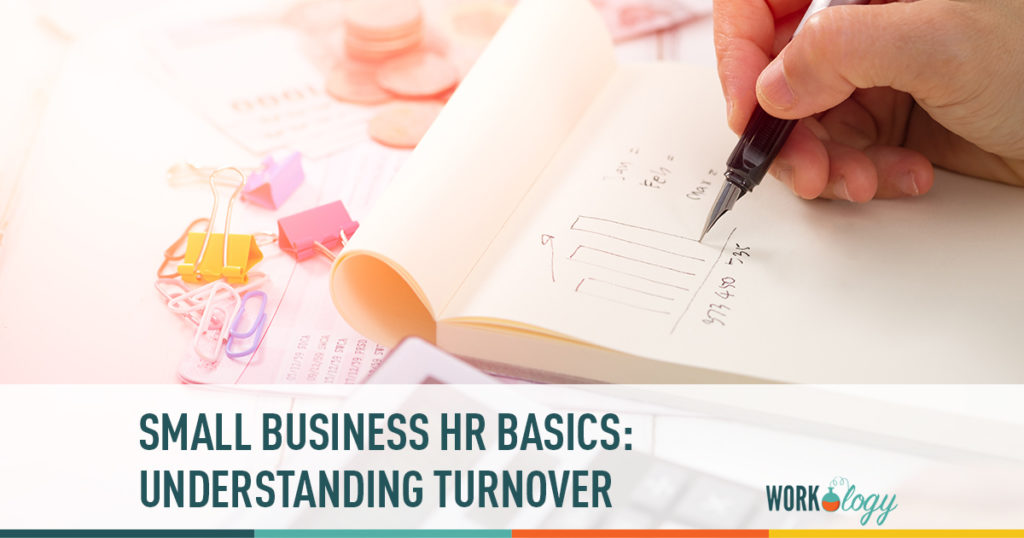The employee turnover formula is an easy but essential tool that too many small businesses neglect. It’s step one in building a strategic hiring plan and streamlining your human resources process. Until you understand what your turnover is and when it spikes, your hiring plan is reactive, not proactive. And while you’re in that reactive mode, scrambling to staff up when needed, you’re probably wasting money on inefficient processes and bad fits.
Calculating Turnover
The turnover forumla is simple: just divide the number of separations by your average total employment. You can calculate this for specific months or get an average for the year. In fact, you should do both. After tracking monthly turnover for a year and setting those calculations against the end of year average, you’ll have a clear picture of your organization’s turnover.
Turnover = Monthly Separations / Average Monthly Employment
With turnover statistics in hand, you’ll be able to predict your hiring needs for the coming year. But in order to get started on your hiring plan, you’ll need to begin two more metrics: time and cost to fill.
Time and Cost to Fill
Time to fill refers to how long it takes your organization to fill a position, from job posting to accepted offer. Without a sense of how long it takes you to fill open positions, your strategic hiring plan won’t get off the ground.
If, for example, you budget a month to staff up for the summer, when your average time to fill is two months, then you’re in for some serious overtime as you scramble to fill all your open roles.
Or, if you’ve calculated your average time to fill but haven’t broken it down by type of role, you may find yourself under or overestimating how long it takes to fill crucial positions. Web developers, salespeople, and cashiers will all have different recruiting footprints.
Average Time to Fill = Total Hiring Process / Number of Roles Filled
As with turnover, you should track time to fill on an ongoing basis, looking for patterns or seasons where time to fill shrinks or grows, and for specific roles which may require more resources to fill.
The last basic metric you’ll need to get started on a more strategic hiring plan is average cost to fill. This one is a bit murkier than turnover or time to fill, because you’ll need to differentiate between sunk, internal and external costs and figure out which ones are truly relevant to your average cost to fill.
Cost to fill refers to the total cost incurred by your organization throughout the hiring process, including posting jobs, advertising, basic orientation and all the time your organization spends on screening, hiring, and processing candidates.
- Sunk costs are things like human resources software – things that don’t recur and can’t be recovered. These should be excluded from your average cost to fill.
- External costs are those that happen outside of your organization, like advertising, posting and background checks. If you pay an independent recruiter or staffing agency to attract top candidates that’s an external cost. These should be included in your average cost to fill.
- Internal costs are those that happen inside your organization, with time spent by employees being the largest internal costs. These should be included in your average cost to fill.
Average Cost to Fill = Total External Costs + Total Internal Costs / Total Hires
With these metrics you have a much clearer picture of the impact turnover is having on your business – not just in the sense of unfilled roles, but in the disruption and cost that filling all those positions has on your team.








